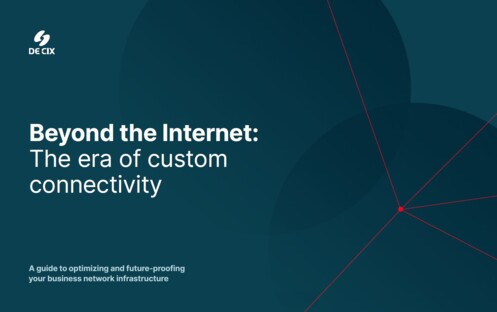Reap the benefits of interconnection and custom connectivity

Interconnection is simply a connection between two or more parties to exchange data, and it is critical to enterprises. Most businesses now rely on platform-based models rather than traditional on-premise systems – they need to assemble solutions using third-party components that share data across ecosystems, and therefore depend on interconnectivity.
Here are four key benefits your business can take from interconnection services.
Improved performance
Optimizing connectivity separated from the Internet means you can increase speed and maximize performance by achieving the lowest possible latency. Latency is the time between a user taking an action and experiencing an application’s response to that action – the time it takes for data packets to travel through the Internet to the application and back again.
A direct connection reduces latency by removing intermediaries and creating the shortest possible path between application and end user. Content and applications should be as close to the users as possible to minimize latency and maximize performance.
Enhanced security
When data travels over the public Internet, the path it takes is not known and highly unpredictable. This brings potential security risks, which are different for each business or sector. Bypassing the public Internet enables your business to eliminate security risks and control the pathways of your critical data. You can connect directly and redundantly to the applications and networks your business needs and by removing hops and gaining clarity into data flows you reduce the potential for security breaches.
Reduced complexity
How many systems, applications and data sources does your business currently connect with? Few people know the answer to that question offhand but – depending on the business – it’s likely to run into the hundreds, if not thousands. Connecting with each of these entities individually is incredibly complex, resulting in an unmanageable web of bilateral connections and relationships. The fact that so many connections cross national borders and regulatory regions just adds to the confusion as you work to meet different requirements.
When you build customized connectivity outside of the Internet, this complexity simply disappears. By using the efficient principles of one-to-many or many-to-many, and aggregating traffic rather than using multiple bilaterals, you can connect simply and directly in a single, clean environment known as a Closed User Group (CUG).
Greater flexibility
So, what might hold you back from building custom connectivity for your business? Perhaps the idea that it could be expensive or time consuming? Or the fear you will be tied into using specific vendors or services?
As a business, your connectivity needs change continually. One week you may want to connect to Amazon Web Services, the next you may need to connect to the Google Cloud. So, you need a solution that is flexible enough to meet your immediate requirements, and also scalable to meet whatever the future holds. There are neutral and affordable providers you can partner with to optimize connectivity outside of the Internet. It does not matter what data centers you use, which networks you want to connect to, or how your interconnection needs change from one day to the next. You can even manage your connections quickly and easily via API or intuitive customer portals.
Find out more about how interconnection services and custom connectivity can help you to achieve exceptional performance and prepare your business for whatever tomorrow brings. Download our ebook “Beyond the Internet: The era of custom connectivity”.